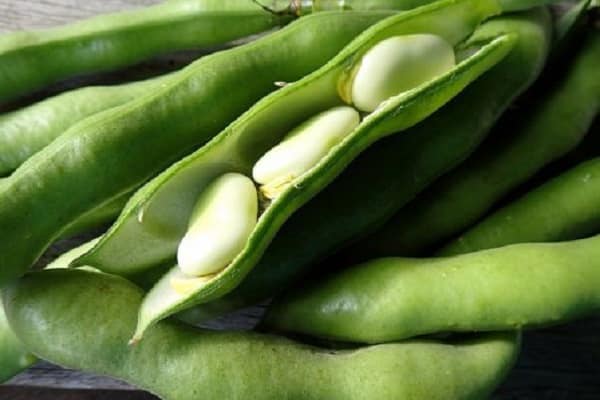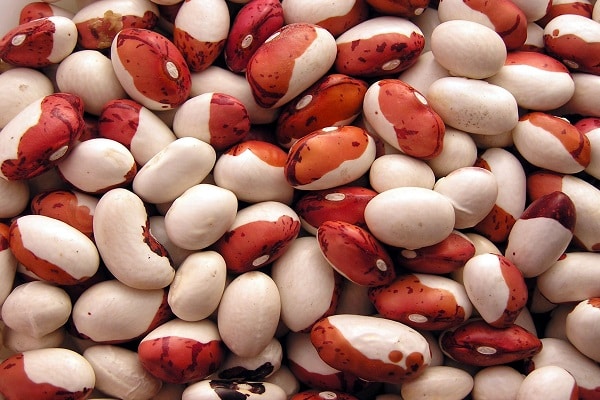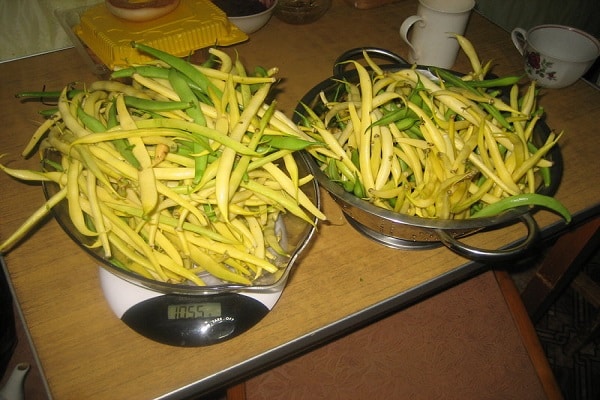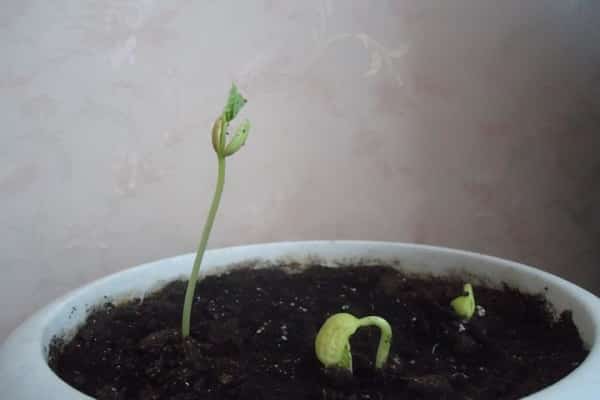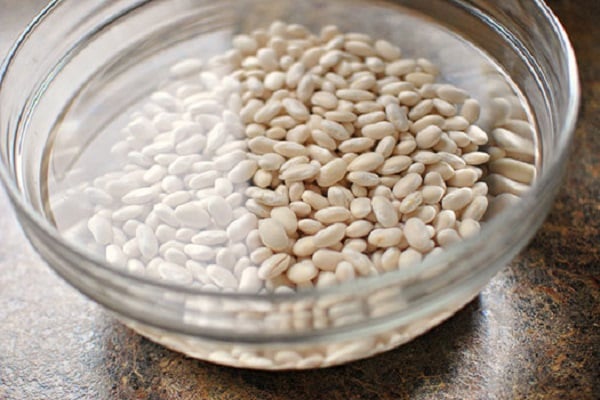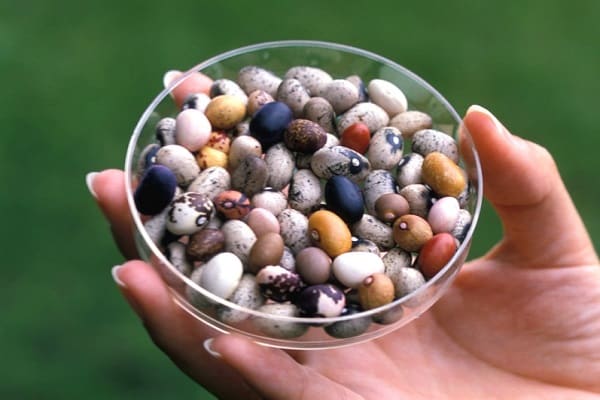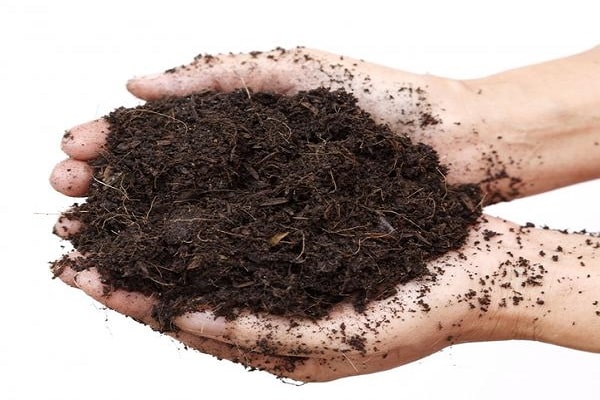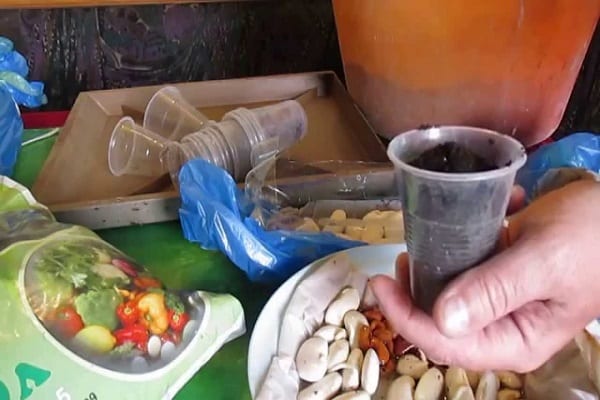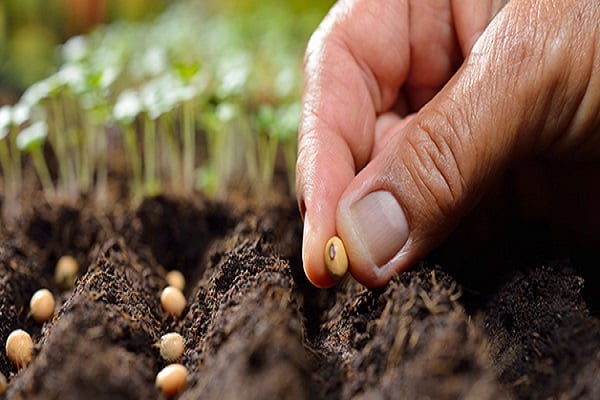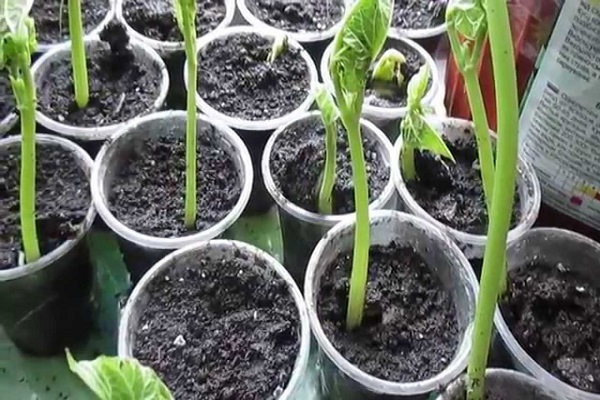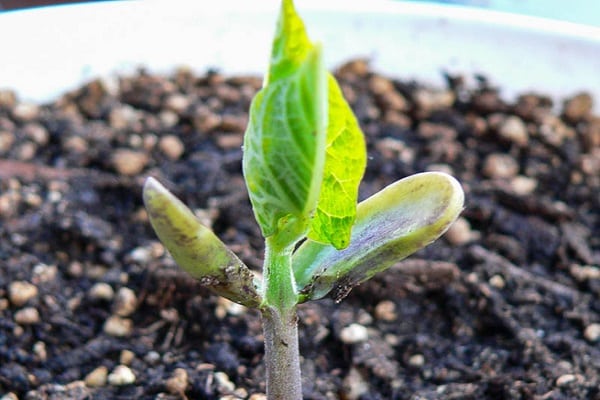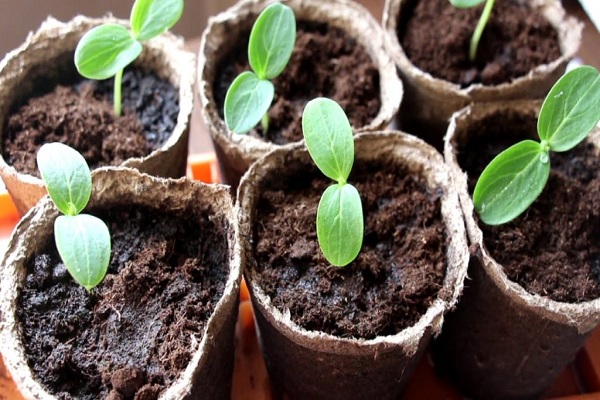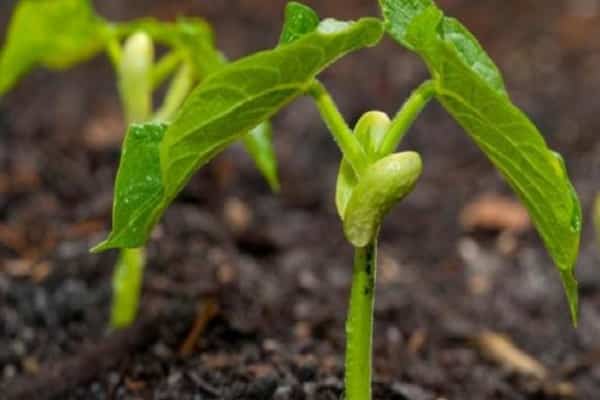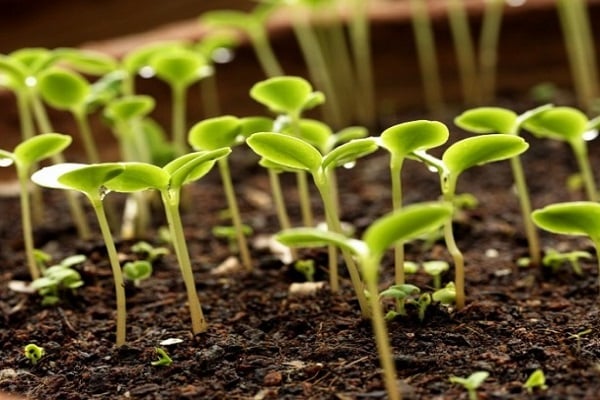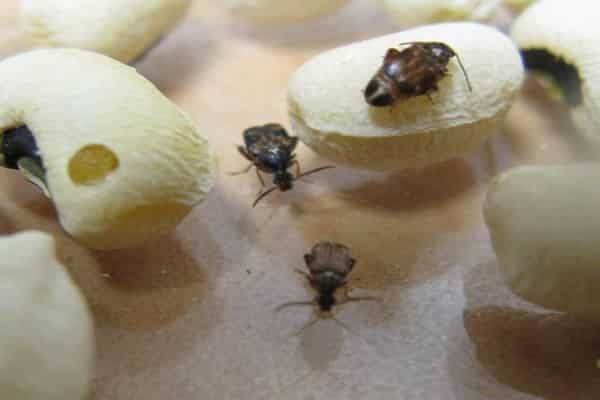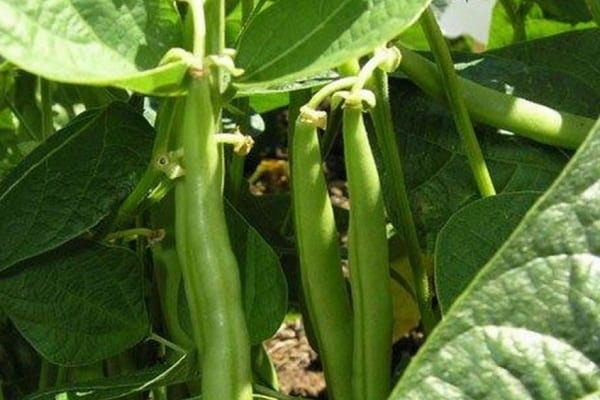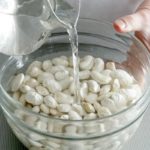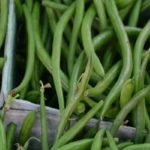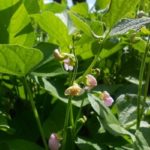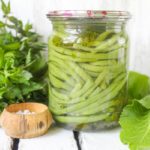A product beloved by many can be obtained without much hassle, without having a summer cottage. You just need to know how to grow beans in a home or apartment. To plant this crop, it is enough to acquire small containers - containers, boxes, pots that can be conveniently placed on a loggia, balcony or windowsill. Beautifully flowering plants will not only provide tasty beans, but also serve as a decorative element.
- How to choose the right bean variety for your home
- Is it possible to create conditions suitable for beans at home?
- Seed preparation and sowing
- Preparing the soil for planting seeds
- Planting stages
- Stage 1
- Stage 2
- Stage 3: Disembarkation
- Caring for beans at home
- Optimal light mode
- What and how to feed beans
- Diseases and pests of beans
- First harvest
How to choose the right bean variety for your home
If you decide to plant beans at home, you first need to decide on the choice of variety. There are several options, the best of which are considered to be asparagus and ornamental species. Bush beans also deserve attention due to their short growing season, rapid maturation and compact size. The characteristics of early bush varieties allow them to be grown in boxes without much hassle. Scuba and Homestead green are popular. For home cultivation, hybrids that are immune to diseases and insect pests are recommended. Decorative species produce large and beautiful multi-colored beans, which are not suitable for food, but are used for further landscaping of balconies.
Early ripening varieties have excellent fruiting in apartments. black Eyed Peas:
- Butter king. Tender, tube-shaped, large pods are removed no earlier than after two months and used fresh for food or as a component of preparations;
- Caramel. A variety with increased resistance to legume diseases. Produces a harvest of sugar pods in two months;
- Saxa 615. A compact variety with small, tube-shaped pods, valued for containing a large amount of useful substances and the absence of coarse fibers.
When preference is given to a climbing species, you should not choose overly climbing varieties that shade the windows as much as possible. I can recommend Speck, Rumba, Violetta. Pinching can stop the growth of the vine, which will bring the start of fruiting closer. Climbing plants are fixed on a trellis or cone-shaped wooden tripod. For bush plants, it is enough to install a low support.
Hulling varieties are planted to obtain dry grains; home conditions are not suitable for this - what is sown is what is harvested.
For those who have decided to plant beans at home for the first time, it is best to purchase several varieties to try and plant 3-4 seeds.
Is it possible to create conditions suitable for beans at home?
The plant requires short daylight hours - no more than 12 hours, this is necessary for the formation of flower buds. If it is possible to provide beans grown on a windowsill with such conditions, the harvest will be early and abundant. The same applies to planting crops on the balcony. This parameter loses its relevance with the onset of fruiting.
To grow beans in an apartment, prepare loamy or sandy loam soil and warm it up to +12 degrees. Growing beans at home will not cause problems, in particular, thanks to the self-pollinating flowers.
Seed preparation and sowing
Seed material should be planted after careful selection and processing. There are criteria for selecting seeds, after which full-bodied specimens remain. The grains should be smooth, with a shiny surface, without signs of pest damage, dark spots, mold, flabbiness, or emptiness. After visual inspection, the beans are filled with salted water.
The floating seeds are discarded. Dry seeds have a hard shell that delays the emergence of seedlings.
The technology for processing bean seeds is as follows: the seed material is soaked for a day in warm water, which needs to be replaced four times. Growth stimulants play a good role. To prevent diseases of seedlings, a weak solution of potassium permanganate, insecticide or fungicide is suitable.
After this, the seeds are placed in a damp cloth until germination.The air temperature is maintained within +25 degrees. As soon as the first shoots hatch, the seeds are planted in the soil, poured into a container with a 5 cm deepening. The soil mixture must be watered and laid out bean seeds roots down or to the side, at intervals of 15-20 cm.
The length of day required to grow beans occurs from mid-February to mid-March. For planting on a windowsill, seeds are prepared in February. On a glazed balcony, beans are sown in mid-May, on an open balcony - at the end of May.
The heat-loving crop is afraid of frost. As an adult, it can withstand short-term drops in temperature of at least -3 degrees.
Preparing the soil for planting seeds
The rapid growth of beans allows you to grow the plant without picking, in a permanent container. Each plant will need at least 3 liters of soil. Pots should be 20 cm high, due to the poor development of the root system. A tight container will make the beans weak and unproductive.
If it is not possible to equip the containers with drainage holes, a layer of expanded clay is poured onto the bottom. You can purchase a universal ready-made soil or prepare the soil mixture yourself. To do this, take equal amounts of humus and turf soil, to which 200 g of wood ash is added. The use of acidic soil is unacceptable. Deoxidation is carried out with dolomite flour, ash, chalk or lime to a pH of 6 - 6.5.
Planting stages
In closed ground - a balcony, a loggia - it is recommended to plant beans at the very beginning of May. The technology for growing in an apartment differs in timing: planting begins in March. A step-by-step scheme for planting this vegetable crop is proposed.
Stage 1
Seeds can be planted in the ground dry or already germinated.If you choose the second option, the seed material is placed in a gauze bag and placed in a container with warm water, which should be added as it evaporates. The first sprouts will indicate the right time to plant the beans.
Stage 2
Let's start choosing a container for planting plants: bush varieties need a volume of soil of at least 3 liters, climbing varieties - 35 liters. Having selected a suitable box, container or pot, we fill it with the soil mixture, the preparation of which was discussed above.
Stage 3: Disembarkation
There are no problems at this stage; it is enough to follow simple rules:
- Before planting dry or soaked seeds, it is recommended to spill the soil with hot water or a manganese solution. The beans are laid out in the holes, maintaining a distance of 10 cm. It is recommended to lay the sprouted seeds on their side, regardless of the location of the sprout, otherwise it is difficult to determine the correct location of the grain. However, nothing terrible will happen if the placement is incorrect, since the seedlings hatch in any case, rushing towards the light.
The optimal planting time is May. Beans germinate within 5-7 days, begin flowering after a month and a half, and the first harvest should be expected a few more weeks later.
Combined cultivation is considered a good option:
- Seedlings grown indoors are taken out to the balcony or loggia when warm weather sets in. Sowing is carried out a month before the threat of night frosts disappears.
- Early ripening varieties sown in February are grown on the windowsill until fruiting. After harvesting, the containers are emptied and placed on the balcony for planting new plants.
Caring for beans at home
Watering the plants is carried out as the top layer of soil dries.On a loggia or balcony, the frequency of irrigation depends on weather conditions: in the heat, the number of waterings reaches two per day. To avoid the occurrence of fungi, you should try not to get water on the leaves. The optimal time to moisten the soil is in the morning. With the appearance of two pairs of leaves, watering is stopped and resumed with the beginning of flowering.
To get a good harvest on an unglazed loggia, bean plantings must be protected from rain, preventing water from stagnating in containers. For this purpose, the containers are moved under the roof, inside the balcony.
Optimal light mode
The culture does not tolerate shading, so for planting, select a well-lit place or arrange additional lighting. However, you need to remember that the daylight hours before fruiting begins should be short, no more than 12 hours.
When growing beans on a windowsill during the winter months, the boxes are placed on the south side. If this is not possible, additional lighting is provided using a phytolamp. At the end of spring and summer, the culture feels great on windows facing west and east.
To determine the difference in yield at different lengths of daylight, it is recommended to conduct an experiment. Young plants of the same variety, grown with the same care, are divided into two groups. The first will develop in short day conditions, the second in natural light.
What and how to feed beans
The first fertilizing must be applied in the phase of appearance of true leaves and repeated twice a month. During the growth period, the plant needs organic fertilizers, but at home it is impossible to use mullein droppings and infusion due to the unpleasant, pungent odor.There is only one way out - regularly adding humus when mixing with soil. The application of such fertilizers ends in the budding phase. Now the beans require potassium and microelements, the role of which will be played by wood ash. The soil is powdered from above, loosened and watered.
For feeding plants cultivated indoors, a natural, odorless fertilizer has been developed - horse manure extract.
Diseases and pests of beans
Home plantings are not protected from diseases and pests. The greatest danger is the bean weevil. If you have indoor plants, thrips, spider mites, and aphids can spread to bean bushes. Indoors, pest control should be organized using biological preparations, as they are as safe as possible for the human body and domestic animals.
Freezing the dry seeds for two days in the freezer at a temperature not lower than -15 degrees helps get rid of the grains.
Beans are affected by bacteriosis and viral anthracnose. Viral infections are incurable, so take preventive measures in the form of spraying plants with special preparations twice before flowering.
First harvest
Mature pods are immediately used for food. When harvesting your own seed material, the fruits are left on the plant until fully ripened. Growing beans at home cannot be called large-scale, but a dozen bushes will provide the owner of the planting with a harvest two months after sowing. Five bushes are enough for climbing beans. Late fruiting occurs due to cool weather.
An unpretentious crop does not require specific skills and experience to grow at home.The development of beans occurs even in cramped conditions and lack of lighting. Creating favorable conditions will provide you with a harvest no less abundant than when planting in open ground. Important agrotechnical practices: sufficient volume of soil, organization of lighting conditions, proper watering and fertilization.

